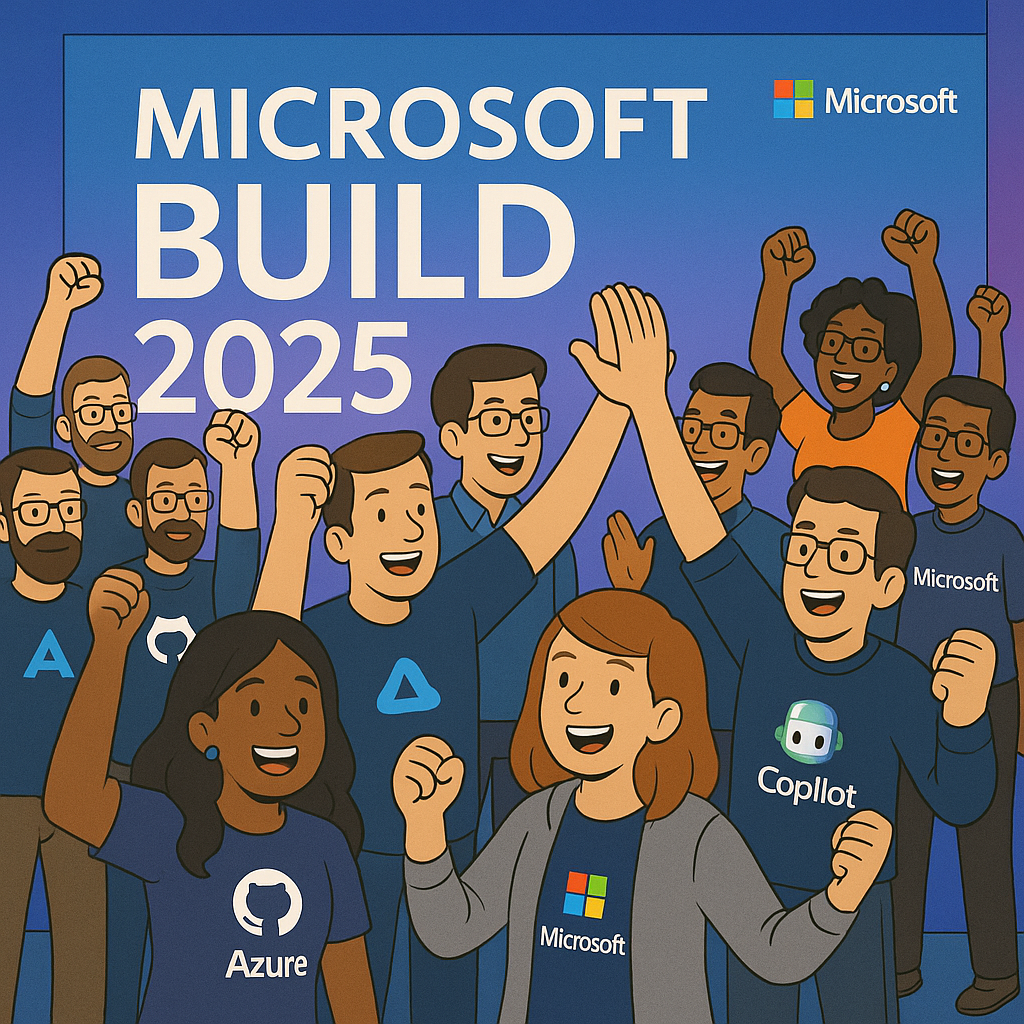
Microsoft Build 2025
This past week, from May 19 to 22, we had an intense and exciting time in Seattle — a week filled with AI, Copilot, and a whole lot of Agents. It was fascinating to see what we’re now capable of building.
How did it all start?
I left Monterrey on the evening of Saturday, May 17, heading to Dallas Fort Worth Airport for an 8-hour layover before connecting to Seattle. I won’t go into too much detail — we all know how airports are — but I landed at Seattle-Tacoma Airport at 10:00 AM on Sunday, May 18, and went straight to my hotel.
At around noon, I headed over to the venue — the Arch Convention Center 705 — to pick up my badge and event T-shirt. With that done, I took some time to explore the city.
Keynote
The first day featured the keynote by Satya Nadella, where he made it very clear: this is the era of AI Agents. Moving beyond just copilots, these new agents are designed to collaborate, make decisions, and perform tasks on behalf of users and organizations.
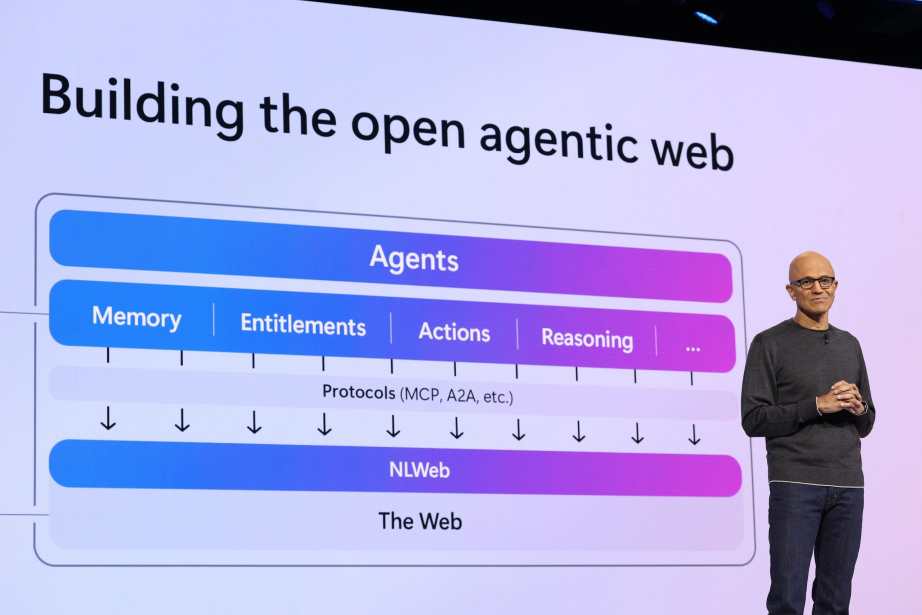
One of the major announcements was the evolution of GitHub Copilot into a more autonomous agent — not just suggesting code, but also debugging, implementing new features, and maintaining projects almost independently.
Another big highlight was the announcement that the GitHub Copilot extension for VSCode will be open-sourced under the MIT license in the coming weeks. This is huge for developers, as it opens up access to the source code, enabling us to suggest fixes, propose new features, or even integrate it with models that aren’t currently supported. The possibilities here are endless.
A key moment was also the introduction of the “Agentic Web” — Microsoft’s vision of a future where agents interact with services and other agents on the web to carry out tasks for us. From managing your to-do lists, booking flights, or even preparing a financial report — agents will do it all.
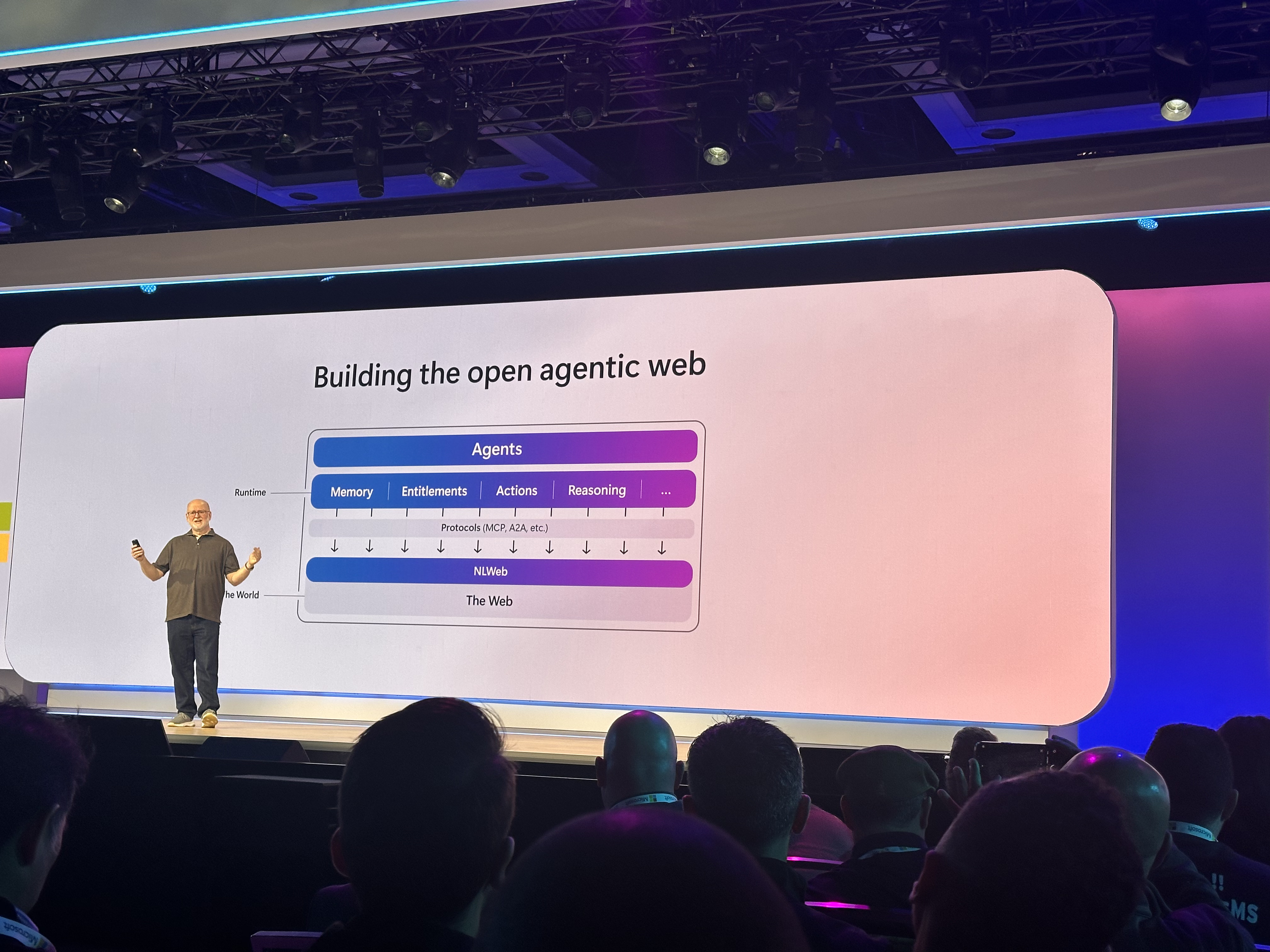
On the second day, the focus shifted more toward developers. Charles Lamanna, Jay Parikh, and Scott Guthrie took the stage to showcase how Microsoft is empowering developers through AI, open tools, and next-generation platforms.
We saw several impressive demos, including the GitHub Copilot Coding Agent, which showcased its ability to resolve GitHub issues. Even with a rough mockup, the agent was able to work through the task effectively.
Another demo introduced the Azure SRE Agent (Site Reliability Engineer), designed to act as a virtual SRE, helping ensure the uptime and stability of your cloud infrastructure.
Microsoft also announced the general availability of Azure AI Agent Service, which helps developers design, deploy, and scale enterprise-grade agents.
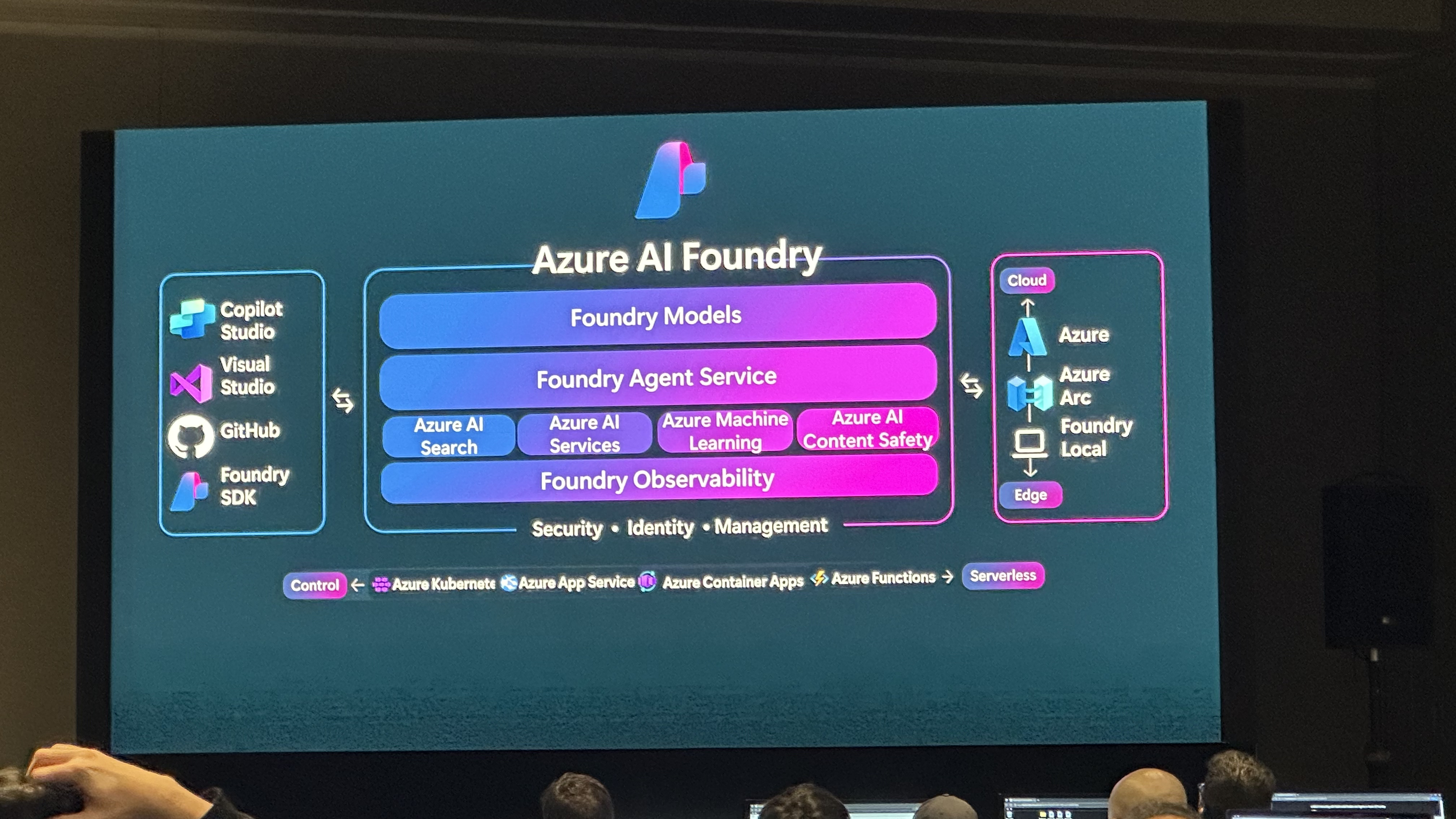
One feature that really stood out to me was Multi-Agent support. This allows for the orchestration of agents to complete complex tasks, supporting protocols like A2A (Agent-to-Agent) and MCP (Multi-Agent Communication Protocol).
Finally, another exciting announcement was Foundry Local — which allows you to run AI models locally on both Windows and macOS devices.
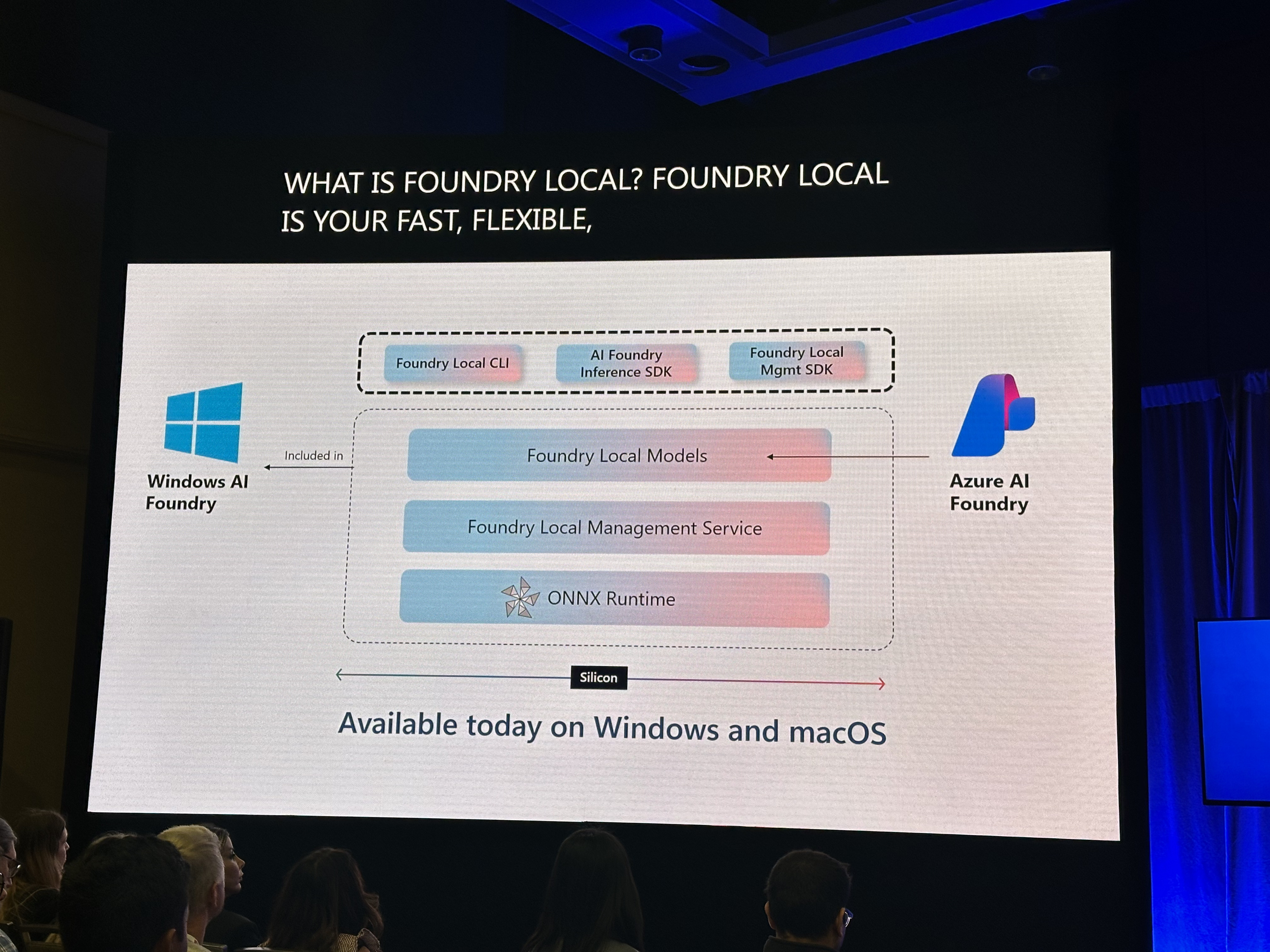
After a fantastic closing Keynote by Scott Hanselman, I go to the Microsoft Campus, it is a very cool place, also I buy some MS shirts and swag lol!
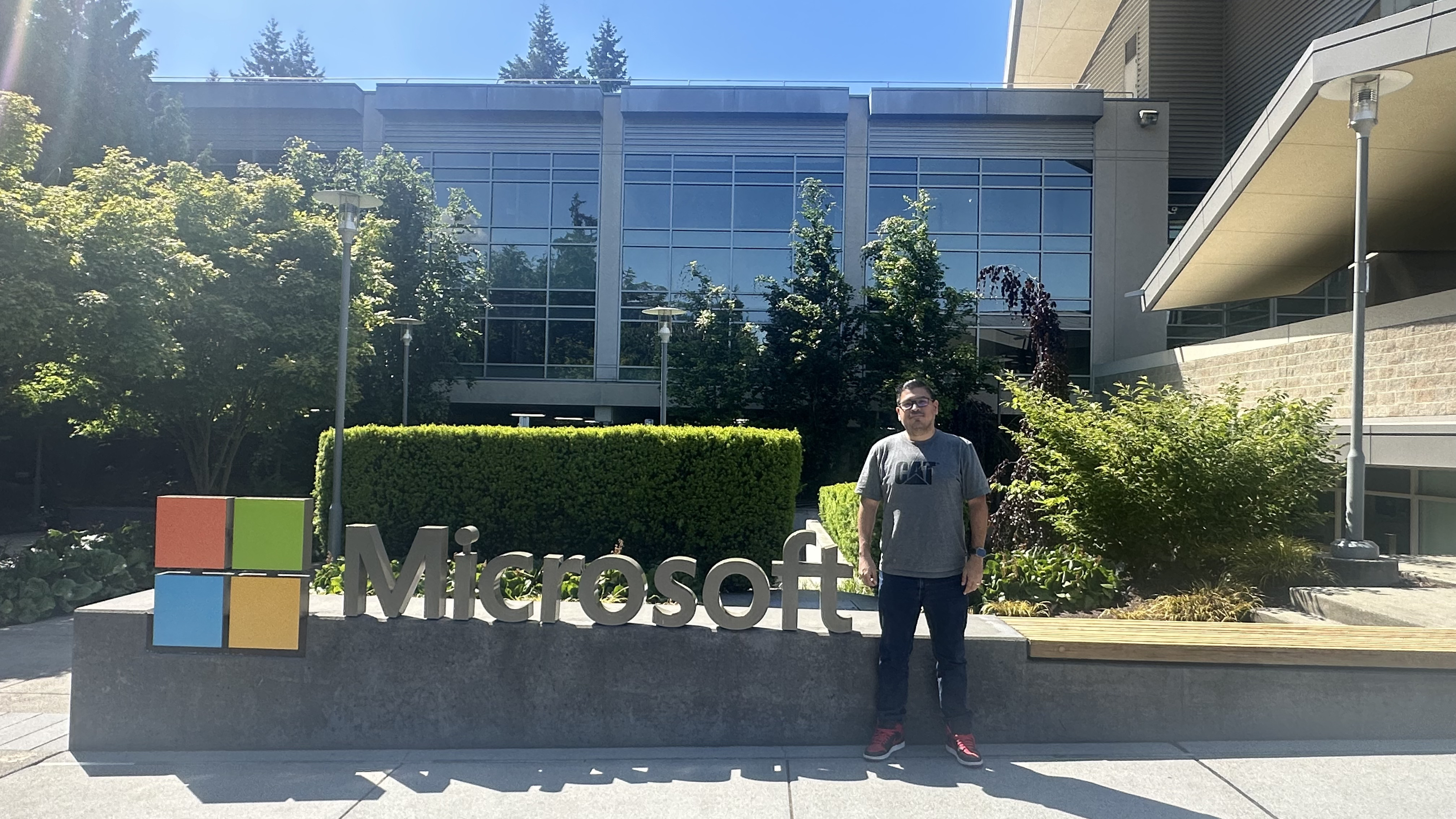
Conclusion
Microsoft painted a compelling vision of a future filled with interconnected agents. This new reality will enable us to build richer interactions and empower agents to take on complex responsibilities. In my personal opinion, development teams will soon become smaller, as collaboration between agents and humans becomes more streamlined and efficient.
What excites me the most is how accessible these tools are becoming. We’re no longer just reading about advanced AI — we now have the means to build with it, test it, and deploy it across real-world scenarios. The potential to automate tedious workflows, improve reliability, and accelerate innovation is truly transformative.
On a personal note, I’m currently working on a content project to create videos that dive deeper into many of these topics — from agent orchestration to local inference, from Copilot integrations to multi-agent systems. There’s so much to explore, and I believe these kinds of resources will help others understand, experiment, and build with confidence.
I’m looking forward to sharing more soon — this is just the beginning.